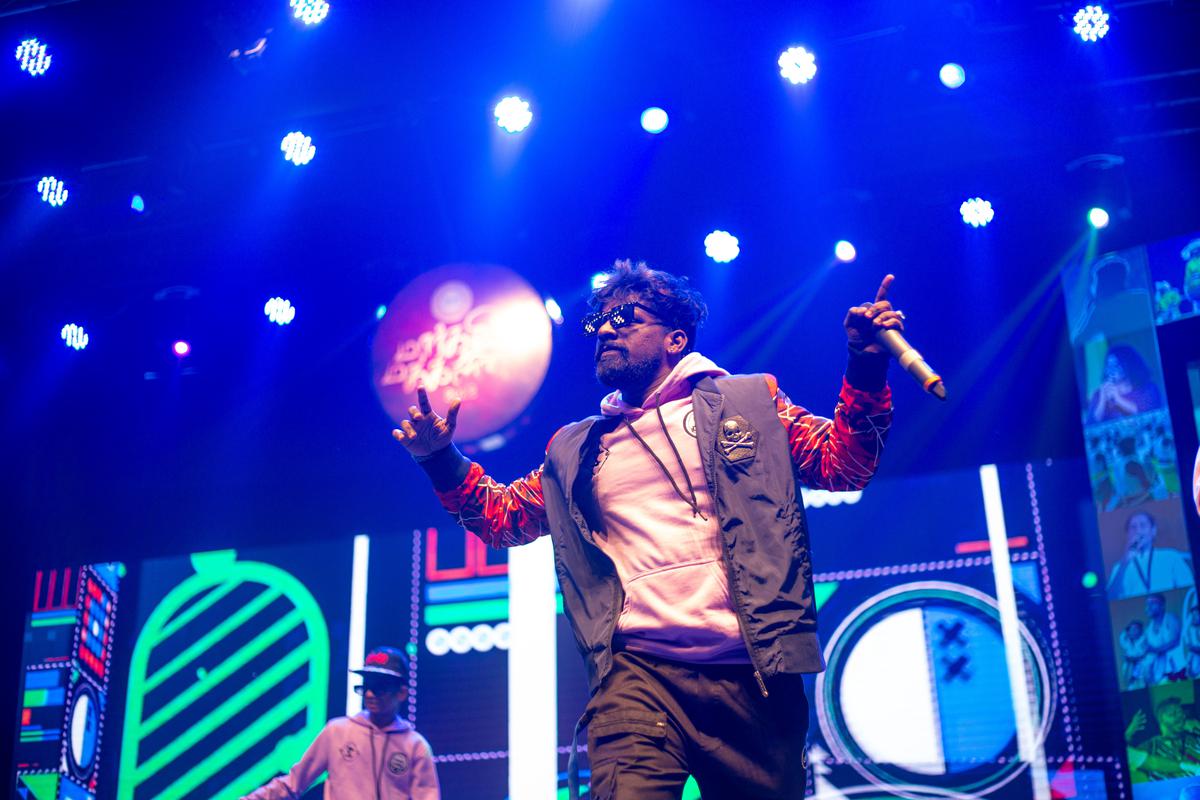On alternate Sunday evenings, a movement takes over Anna Nagar Tower Park.
With big, Bluetooth speakers in hand, rappers face their contemporaries in a friendly war of riffing. Beatboxers and B-boys join in, as intrigued crowds look on. Verses in Tamil that span dialects take over a pocket of the public park as a growing community marks its presence.
This fortnightly affair has a fond moniker: The Movement.
Against the backdrop of the mighty tower, they rap about everything under the sun — from societal pressures and politics of the body, to love and food — but the underlying sentiment holds true to the city. A rooted sense of being is hard to miss.
| Video Credit:
Special Arrangement
The city’s interaction with hip hop started in the early 2000s, owing to the proliferation of Malay-Tamil rap by the likes of artistes Yogi B, Natchatra and Psychomantra, but has steadily grown since, despite the pandemic lull, as more independent artistes experiment with the form.
The city, from North to South and East, has for long fostered homegrown independent talent. From Lock Nagar, to Kasimedu and Kodambakkam, pieces of the city play characters in their music.
For some artistes, the international exposure that a genre such as hip-hop brings to the table is what makes it so alluring. Director Ken Royson who lends a visual narrative to Tamil rap through widely popular music videos (take for instance, the album Therukural by OfRo and Arivu), credits the Tamil diaspora from countries like Malaysia, Singapore and Sri Lanka, and their consistent involvement in the genre as his entry point.
From 2019 onwards, with albums like Therukural and singles like ‘Enjoy Enjaami’ garnering global attention, an independent Tamil rap renaissance was cemented. Rappers Arivarasu Kalainesan or Arivu as we know him, and OfRo were instrumental to this. “Over the last four years, the independent music culture has become more democratic, and less niche. There is space for every artiste to put their work out freely. There is a sense of pride when you say that you are an independent musician,” says Arivu.
“Today it’s big. If we started out with a capital of ₹5,000 to ₹10,000 per video, today it stands at ₹10lakh to 15lakh,” says Ken, who along with OfRo also founded Atti Culture, a platform for independent artistes. This team is behind one of Tamil independent music’s most viral songs till date, ‘Jorthaale’ by Asal Kolaar, which has clocked over 50 million views on YouTube. “In a few years from now, I anticipate that the independent music scene will surpass mainstream cinema music,” says Ken.
Asal Kolaar, OfRo and Ken Royson of Atti Culture
| Photo Credit:
Special Arrangement
Call of the street
‘Jorthaale’ is the ideal manifestation of what Tamil hip hop really is: The track, which bursts with infectious energy, is a celebration of street culture, condensed in two-odd minutes.
Over the years, artistes, directors and producers have realised that it is this urge to reach out to their roots that ultimately strikes a chord. “Growing up, I have never really sat at home. I would be out in the streets for most part of the day. That culture is part of who I am,” says Asal who hails from the seaside locality of Kasimedu. “It was the ooru or the streets that taught me a lot. The streets are all I know. This is how I see my Chennai.” The sea is often a character in his work.
MC Devesh.
For Nigavithran, ‘the personal’ is what makes his music. And it is intrinsically linked to the city and locality where he has spent most of his life, Chepauk’s Lock Nagar. Recently, when a Mumbai-based record label approached him for a single, he responded with a track that introduces the locality to people outside the city.
His album 82D Block adopted a similar trajectory — “from being ashamed to bring my friends to my house as a child, to realising that the locality and its streets are part of my identity, it has been a long way”. The folk art form gaana was his entry point to Tamil rap. He is currently working on an album entirely dedicated to Pulicat (Pazhaverkadu), and the threats to its ecosystem.

Nigavithran in performance.
| Photo Credit:
Special Arrangement
Brothers in beats
Anna Nagar Tower Park is home to these gatherings solely because of how accessible it is to artistes travelling from the northern part of the city, says rapper MC Devesh who has been in the industry for four years. Much like his contemporaries, his work impinges on how a musician, like himself, can break through the mainstream. Hip Hop Thamizha’s Meesaya Murukku was a turning point in his induction into the genre. “That was when I realised that there is space here for Tamil rap music.”
Devesh says, “We have been doing this [cyphers] since the lockdown, but there was a break in regular meetups. At any given time, around 20 people show up. And sometimes, the number goes up to 30 or 40 people.”
The cypher, held in public spaces, also fosters new audiences and most are school and college students. “It is endearing to see young children snaking their way through the crowds to understand what is happening,” he adds. Most artistes who gather also use the space and the people around as tester audiences. Nigavithran fondly remembers the support that poured from fellow rappers across the city when he started out. “They would often invite me to be part of these small shows they went to.”
More visibility also means new opportunities. With mainstream Tamil cinema spotlighting indie talent like never before, Tamil hip hop is also finding space in the big screen. There’s one thing most swear by: that Tamil Rap is well on its way to becoming mainstream.